Abstract
A case-comparison study was carried out in 1972 to determine the characteristics of users and nonusers of child health services. A sample of 529 mothers with children under five years of age (eligible children) residing in one poor barrio in Cali, Colombia was selected. The characteristics of mothers and their eligible children were described in relation to their use or nonuse of health services and a set of indicators was develop which differentiated the nonuser group from the user group. A two-stage sampling technique was used. First, blocks in the barrio were sampled, and second, an equal number of mothers with eligible children who used and who did not use services in the year prior to the study were selected for interview. Nonusers were matched with users on distance from home to local health center. The set of indicators which best discriminated the groups was: the number of eligible children, age of mother, access to free medical care, the action proneness score (attitudes), and knowledge of health, illness, and services. The study method permitted identification of the target population for services, determination of current patterns of use, and quantification of morbidity and immunization levels.
Full text
PDF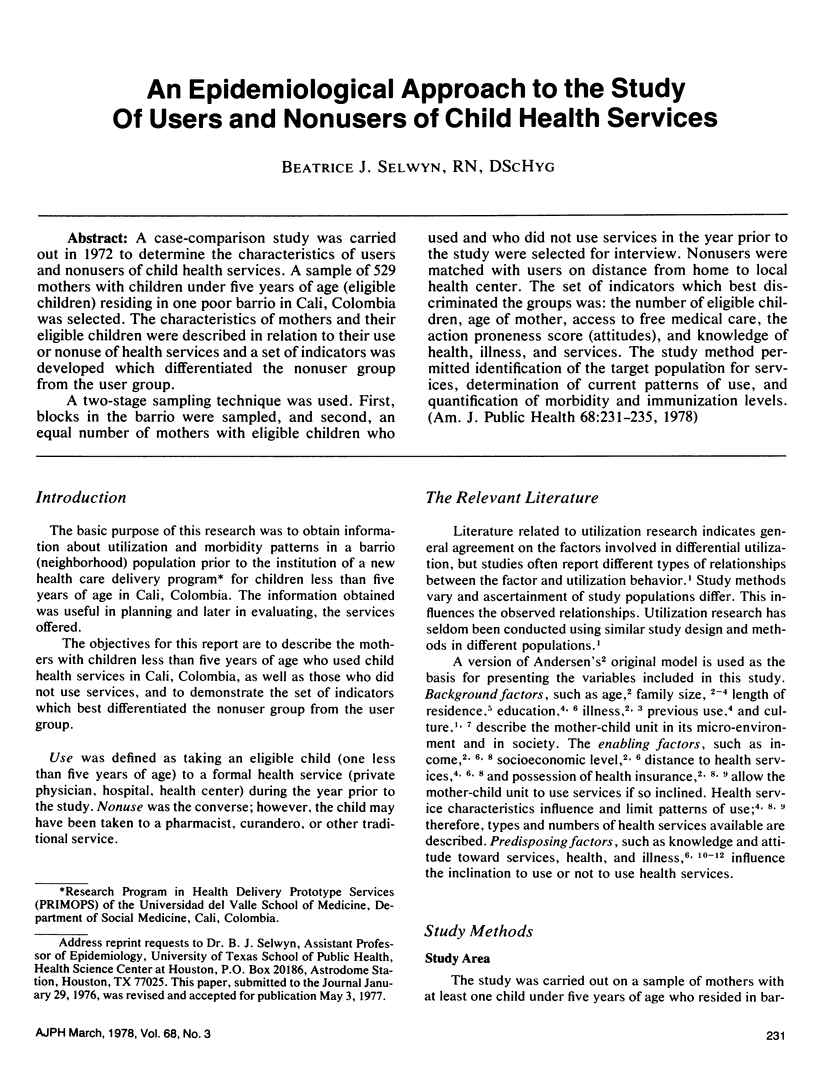
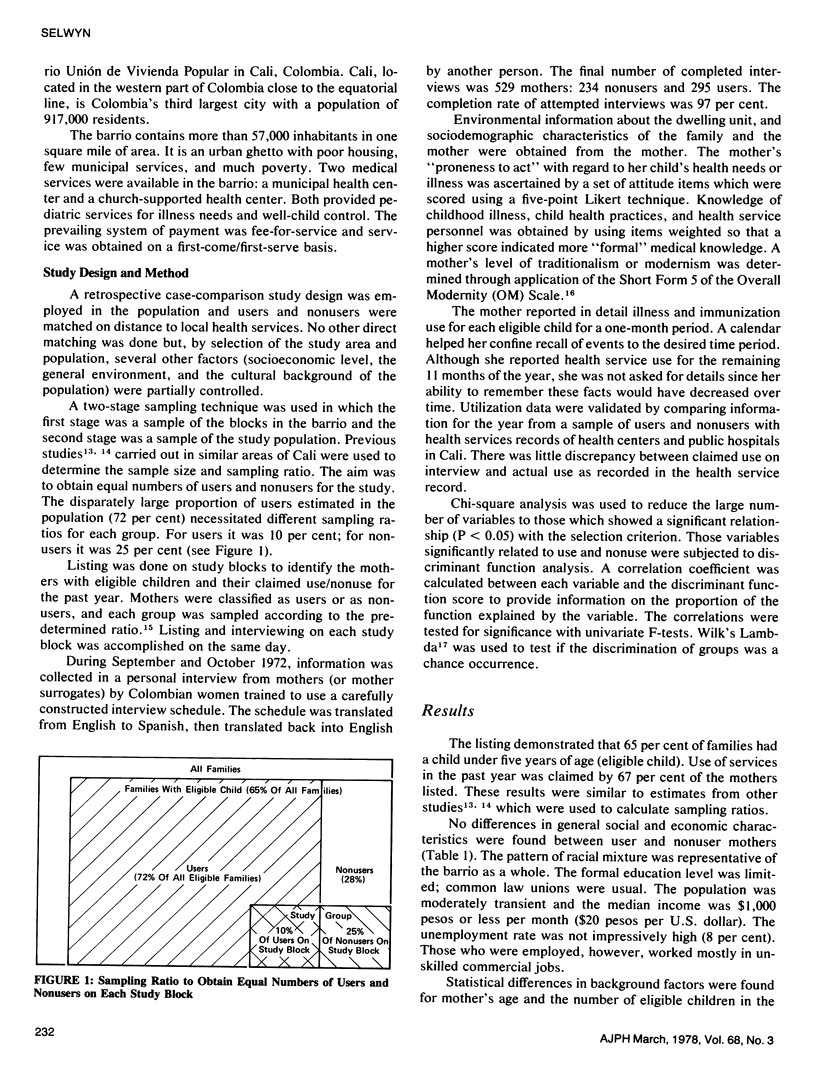
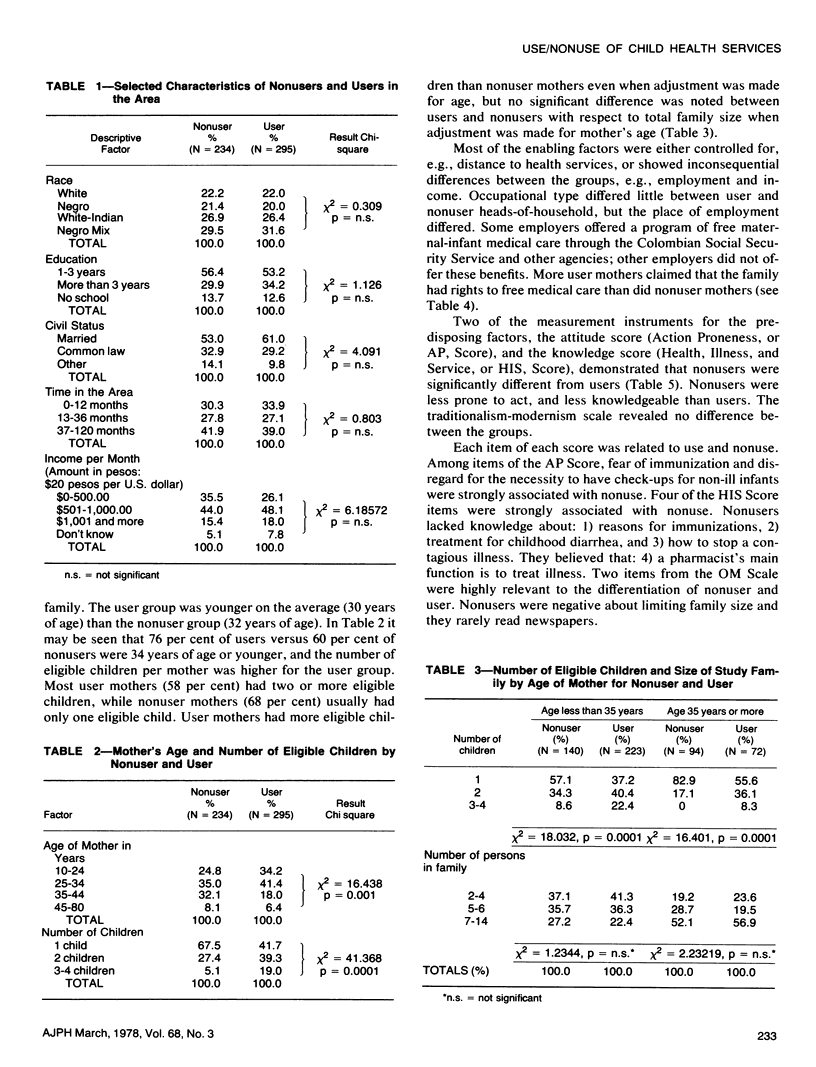
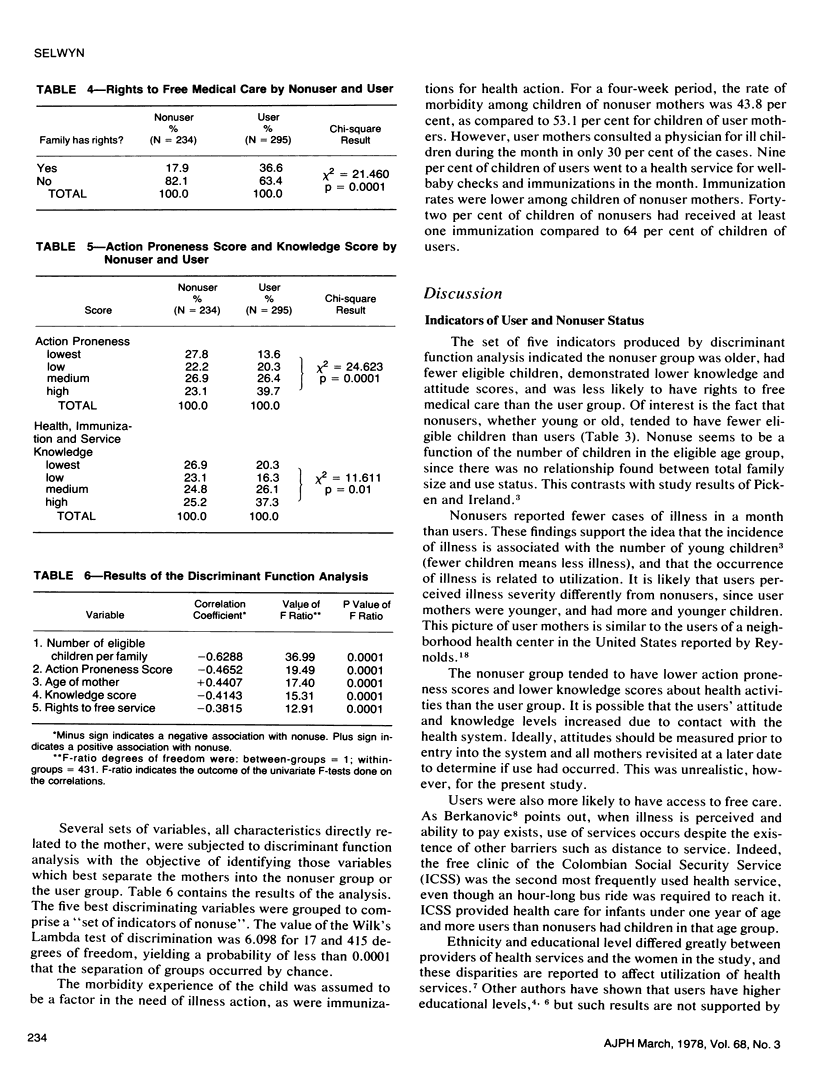
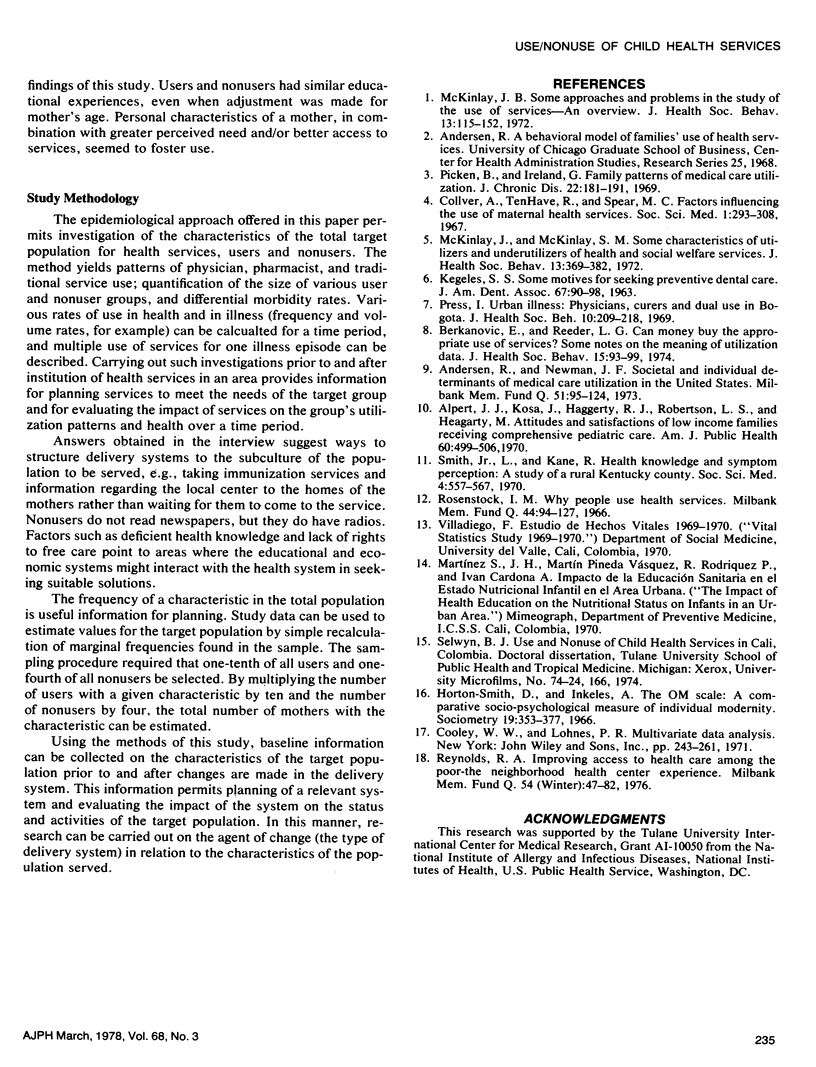
Selected References
These references are in PubMed. This may not be the complete list of references from this article.
- Alpert J. J., Kosa J., Haggerty R. J., Robertson L. S., Heagarty M. C. Attitudes and satisfactions of low-income families receiving comprehensive pediatric care. Am J Public Health Nations Health. 1970 Mar;60(3):499–506. doi: 10.2105/ajph.60.3.499. [DOI] [PMC free article] [PubMed] [Google Scholar]
- Andersen R., Newman J. F. Societal and individual determinants of medical care utilization in the United States. Milbank Mem Fund Q Health Soc. 1973 Winter;51(1):95–124. [PubMed] [Google Scholar]
- Berkanovic E., Reeder L. G. Can money buy the apporpriate use of services? Some notes on the meaning of utilization data. J Health Soc Behav. 1974 Jun;15(2):93–99. [PubMed] [Google Scholar]
- KEGELES S. S. Some motives for seeking preventive dental care. J Am Dent Assoc. 1963 Jul;67:90–98. doi: 10.14219/jada.archive.1963.0231. [DOI] [PubMed] [Google Scholar]
- McKinlay J. B., McKinlay S. M. Some social characteristics of lower working class utilizers and underutilizers of maternity care services. J Health Soc Behav. 1972 Dec;13(4):369–382. [PubMed] [Google Scholar]
- McKinlay J. B. Some approaches and problems in the study of the use of services--an overview. J Health Soc Behav. 1972 Jun;13(2):115–152. [PubMed] [Google Scholar]
- Picken B., Ireland G. Family patterns of medical care utilization. Possible influences of family size, role and social class on illness behavior. J Chronic Dis. 1969 Aug;22(3):181–191. doi: 10.1016/0021-9681(69)90058-7. [DOI] [PubMed] [Google Scholar]
- Press I. Urban illness: physicians, curers and dual use in Bogota. J Health Soc Behav. 1969 Sep;10(3):209–217. [PubMed] [Google Scholar]
- Reynolds R. A. Improving access to health care among the poor--the neighborhood health center experience. Milbank Mem Fund Q Health Soc. 1976 Winter;54(1):47–82. [PubMed] [Google Scholar]
- Rosenstock I. M. Why people use health services. Milbank Mem Fund Q. 1966 Jul;44(3 Suppl):94–127. [PubMed] [Google Scholar]
- Smith D. H., Inkeles A. The OM scale: a comparative socio-psychological measure of individual modernity. Sociometry. 1966 Dec;29(4):353–377. [PubMed] [Google Scholar]
- Smith L., Jr, Kane R. Health knowledge and symptom perception: a study of a rural Kentucky county. Soc Sci Med. 1970 Dec;4(5):557–567. doi: 10.1016/0037-7856(70)90014-4. [DOI] [PubMed] [Google Scholar]


